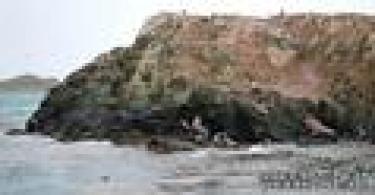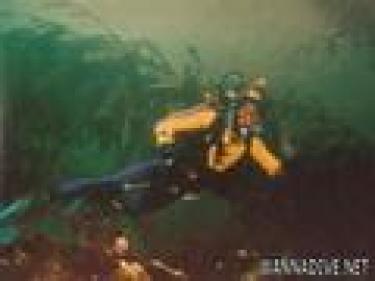Dive in Ushuaia
Diving in Ushuaia
The underwater sceneries are off-shore outings in which rock formations, fantastic alga forests, many crabs, attractive starfish and the precious spider crab may be observed.
It is recommended to start at Bahía Ensenada. The first stretch is traveled by land until the Tierra del Fuego National Park is entered and the shores in front of Redonda Islands are reached. The calm waters and the easily accessed beach that gains depth gradually let adventurers try the suit and exercise floatability. Once the domination of the equipment is managed, Redonda Island may be reached on a motorboat. This geographical feature offers deep 27-meter-high walls surrounded by a thick alga forest dwelled by the typical wildlife of the Beagle Channel, often visited by sea lions. Estorbo Island is reached from the same bay. It offers a progressive descent seabed with a slight slope, leafy algae and small fish.
Another nearby bay is Puerto Cucharita, accessed through Ensenada after sailing during 20 minutes. This underwater scenery, with high plateaus covered with algae allows diving through tunnels where a great deal of starfish, crab, fish and anemones may be seen. Divers may reach 35 meters of depth.
Outings to Estancia Túnel, Isla de los Lobos (Sea Lions Island), Bridges Islands and Iturrieta or Hache Island, ideal for night diving, are other interesting options to explore the inner part of the Beagle.
In the unfathomable seabed, beyond the fascinating natural landscape featured by the vast southern seas, what attracts most divers are the countless shipwrecks, an option only for the most expert, as it is necessary to be well-prepared to face adverse conditions. Nevertheless, though most of them are impossible to visit, some turn out to be more accessible for diving. And if the weather is fine, the experience is unique.
One of the best known is the old Sarmiento vessel, partially sunk in the east part of the channel. As it is in the outskirts of town, it is advised that divers leave the city early but it is worth the effort. Diving starts at the beach and the remains are upholstered in sponges, ascidians and algae. Besides, it shelters some fish and spider crab.
Now, the crown jewel is undoubtedly the Monte Cervantes. If the current is calm and clean, the superstructure of this impressive 160-meter-long cruise that shipwrecked in 1930 near Les Eclaireurs Lighthouse may be toured.
In 1953, experts attempted to liberate it and tug it to the shore of Ushuaia. It was divided in two parts for such purpose but maneuvers failed and it ended up getting definitely lost in the blue abyss. The local divers managed to find the deck, the cabins, the poles and part of the dead work that got stuck between the 35 and 45 meters of depth. At present, the area is visited by experts as the currents and the winds are strong and changeable and there is no shelter nearby. The hull rests at 110 meters of depth, beyond sport diving reach.
Travel to Ushuaia

How about diving in the polar waters of Ushuaya? In addition to the fascinating submarine life developed in these latitudes, the shipwrecks that silently dwell the cold subantarctic seas have a particular attraction on divers. In this singular city, any adventure or sport activity acquires a particular kind of relevance. One of the most attractive and challenging is scuba diving, not only due to the natural conditions typical of these latitudes, but also due to the fascinating spots that may be discovered under the cold southern waters.
In principle, it is essential to contact the local instructors in order to dive in Ushuaia. They will provide all the necessary technique and show adventurers around the places authorized for this kind of dive. In addition to handling the basic diving techniques, it is necessary to become familiar with the dry suit, appropriate for the temperature of the waters, ranging between 8º and 10ºC in the summer and from 2º to 4ºC in the winter. If divers have the correct equipment, they can go underwater at any time of the year, bearing in mind that visibility reaches 20 meters in the winter whereas it only gets to 7 meters in the summer, due to the large amount of plankton present in the sea during that season.
Read more about diving in Ushuaya in our dive site page.





